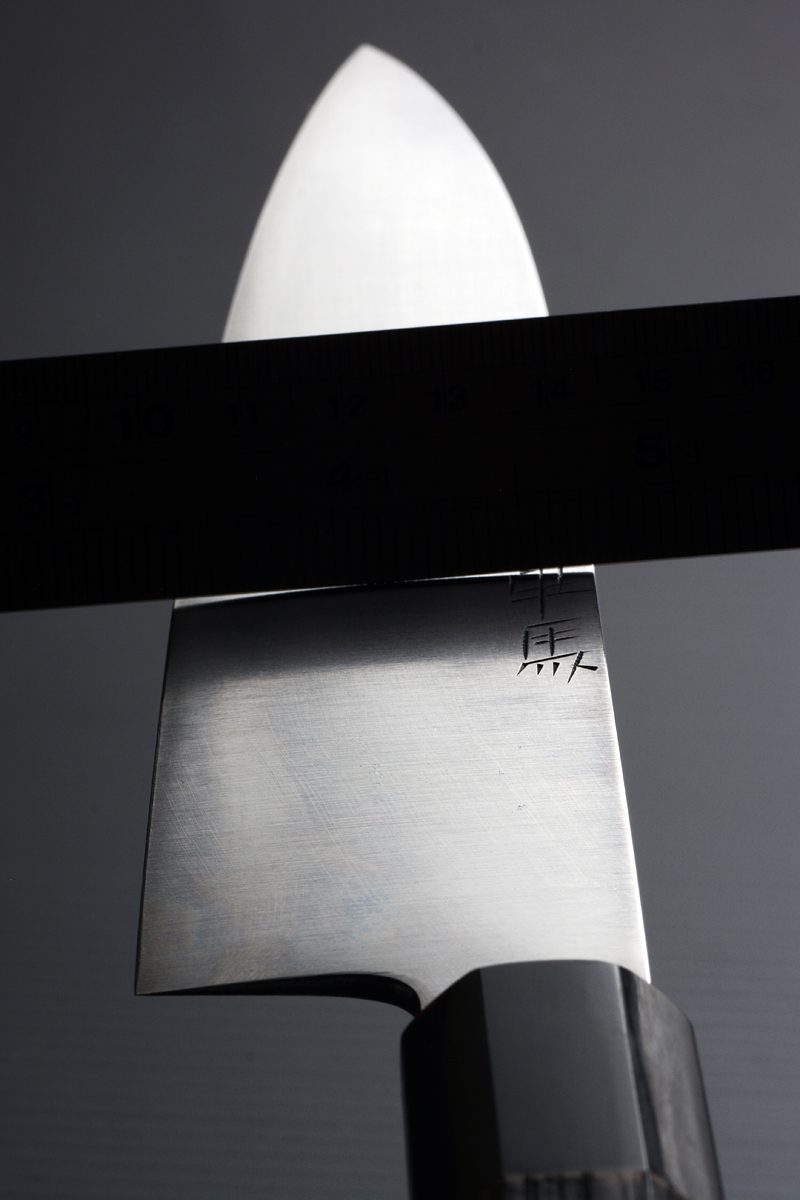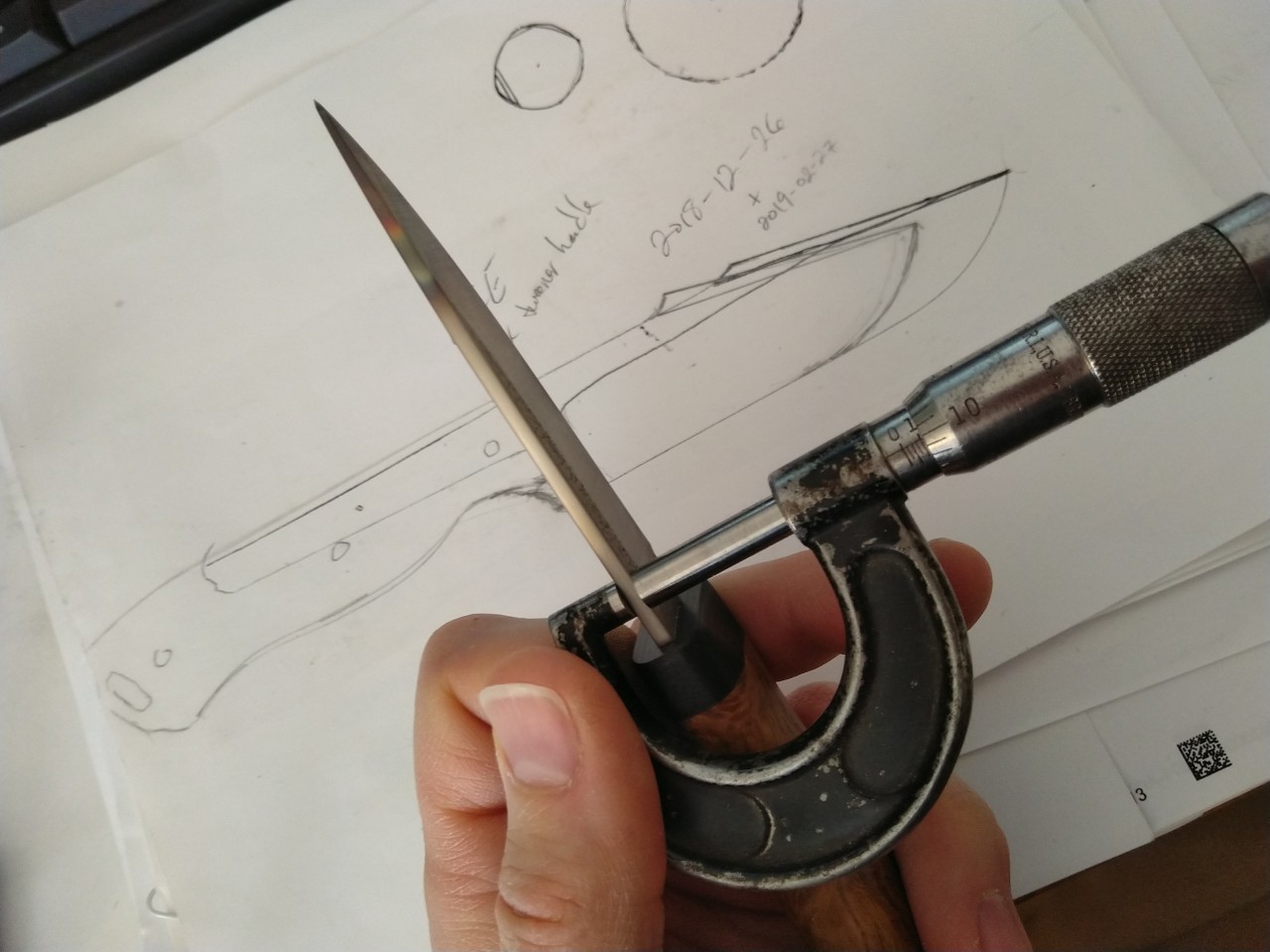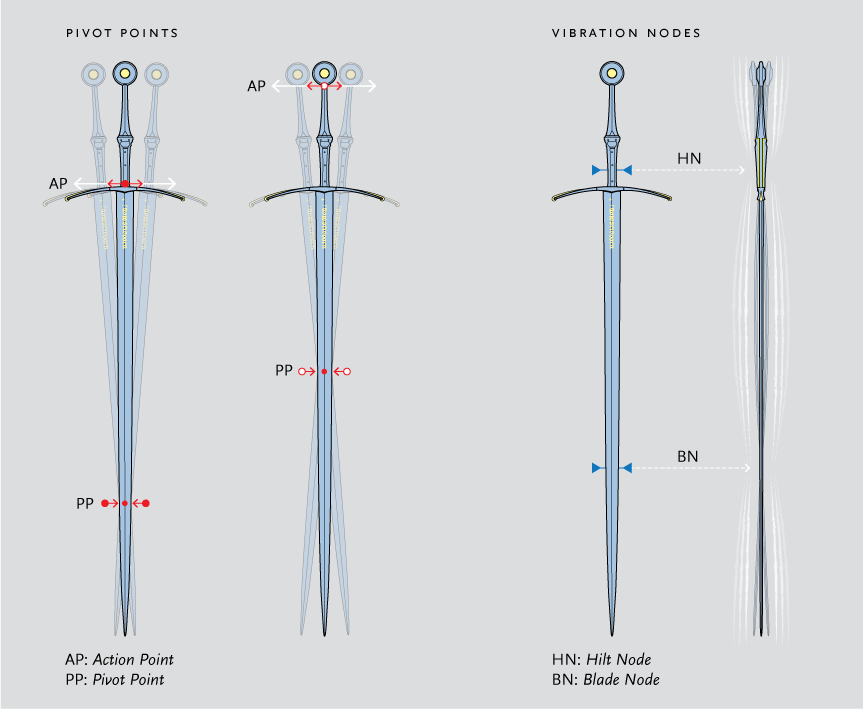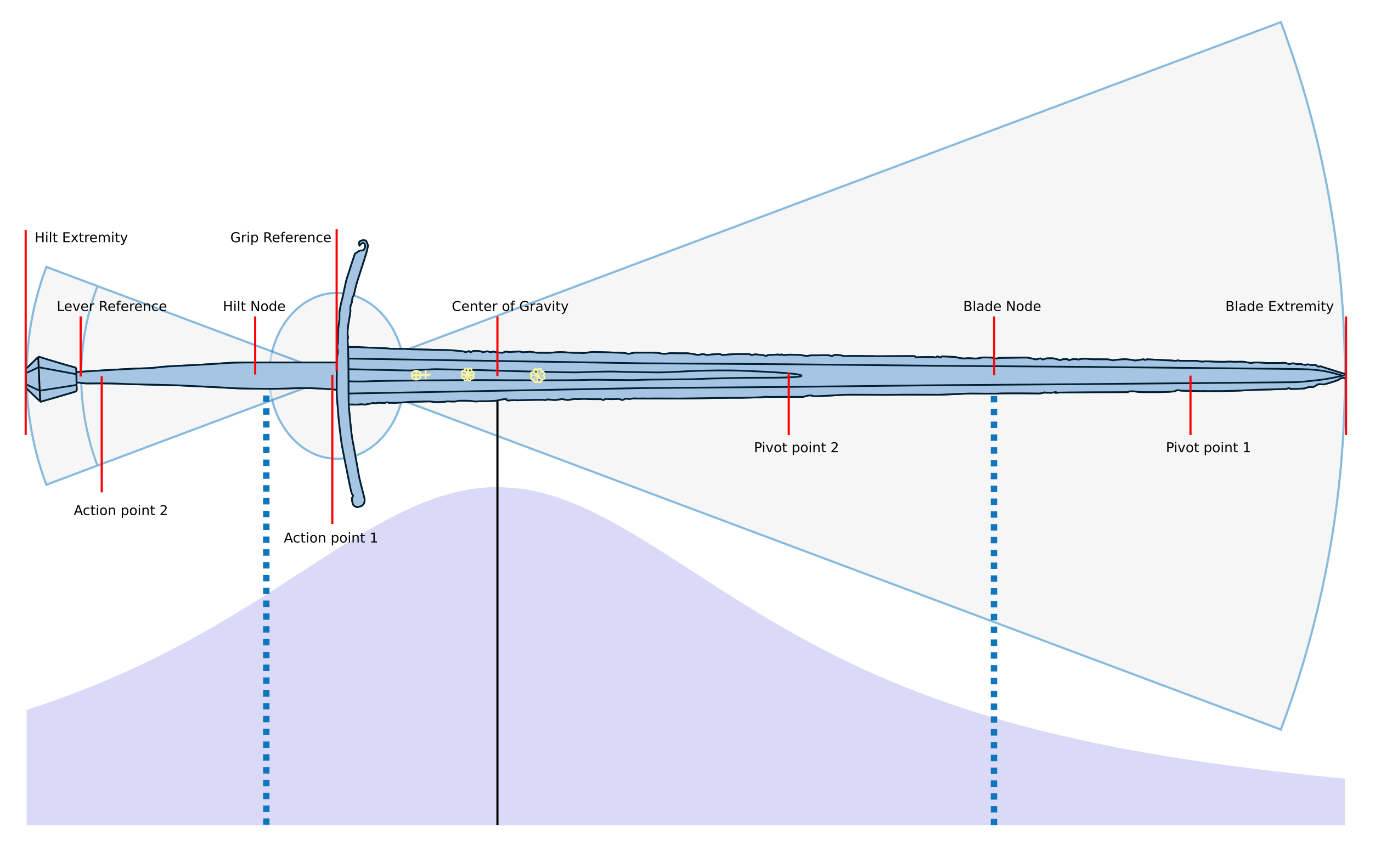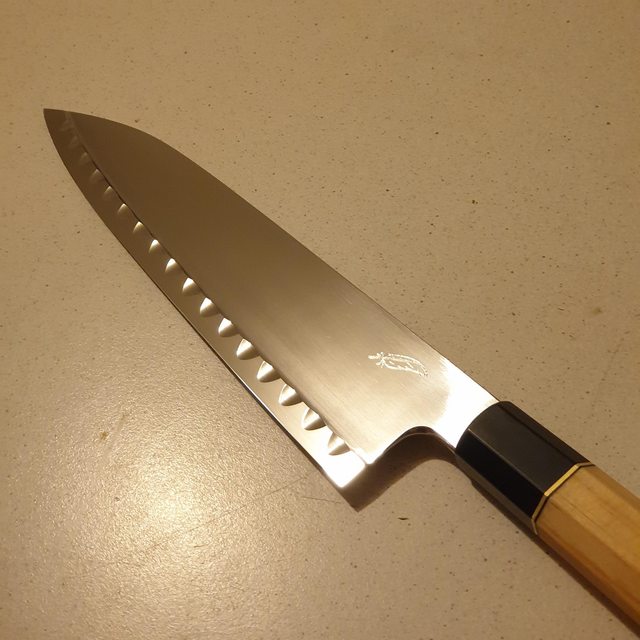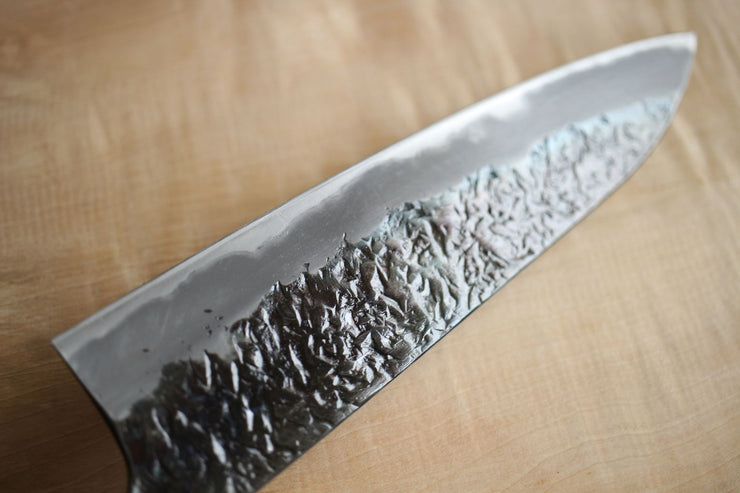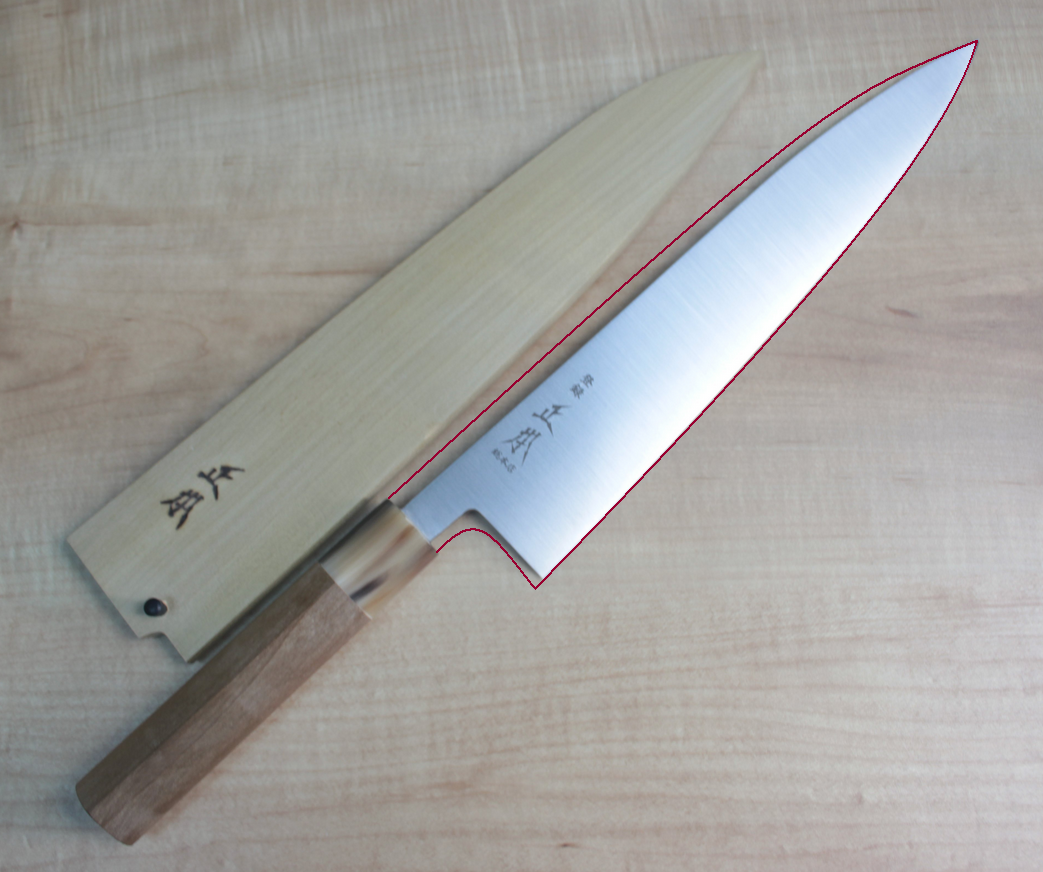There's definitely a sweet spot for springiness. I often hear complaints about blades being too flexible, but I think the reverse (a clunky thick tip) tends to be put up with more often.
__________________
Okay, here is something that hasn't been mentioned yet - I like to call it "the KS effect".
It turns out that the choil (or better yet, the emoto) - with all other things being equal - has a significant effect on how the overall knife behaves and can actually nullify a precise measurement of the heel height.
Take a look at this example:
These two profiles are identical in terms of the properties we've talked about so far. Blade shape, flat spot, the handle/spine angle relative to the board... all of these essentially duplicated. If we were to take each one and measure the height of the knife at the heel, the numbers would come out exactly the same. However it wouldn't give a good indication of how tall each knife feels on the board, as the shape of the emoto has caused the one on the left to be a "shorter" knife, while the one on the right is "taller". It's a difference of only a few millimeters, but it's enough to feel during use.
I first noticed this while looking closely at the Masamoto KS to work out why the blade looks so thin and slender, and I soon came to realize that their style of emoto raises the handle off the spine and gives them more space to work with. Other styles of emoto can cause handles to rest closer to the board, despite what an equivalent heel measurement might indicate.
Compare the following image to the one at the top of the thread - Could it be considered a KS clone?







